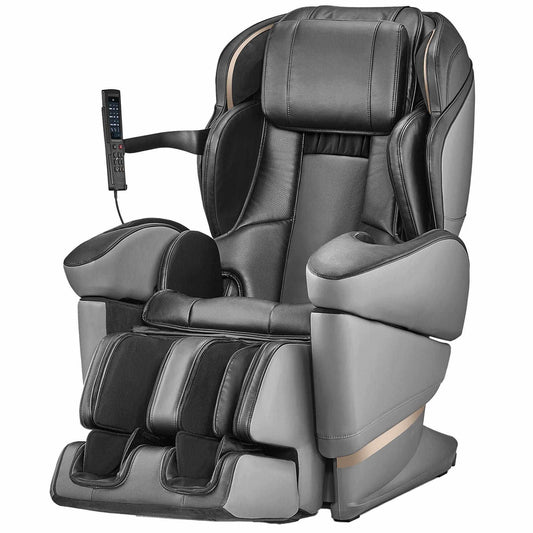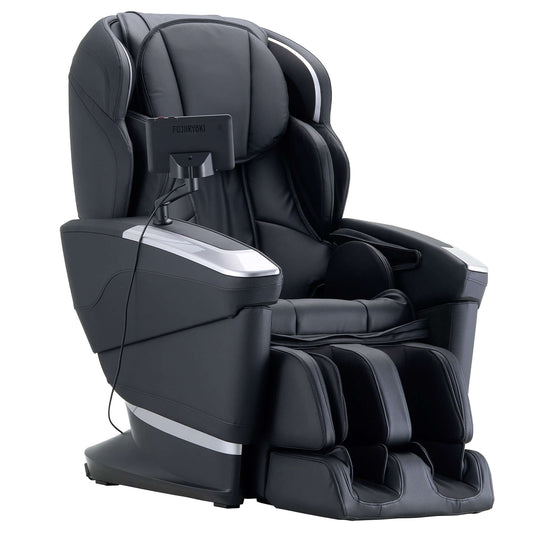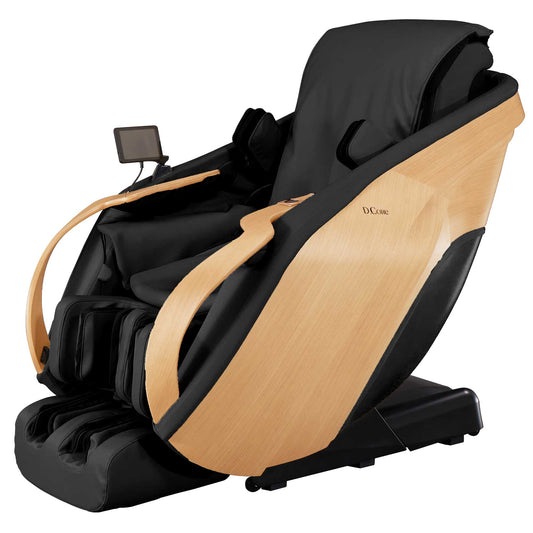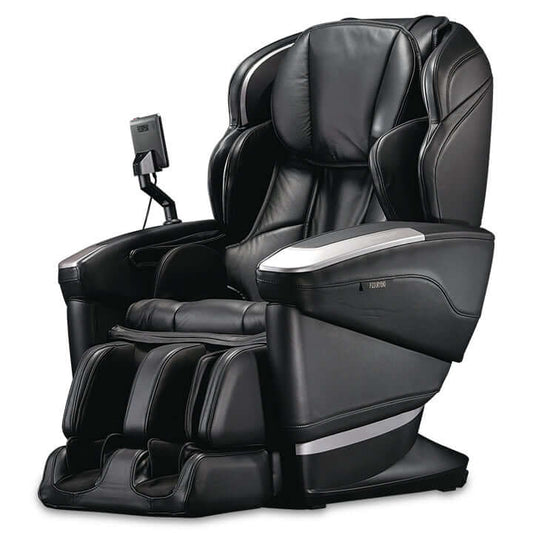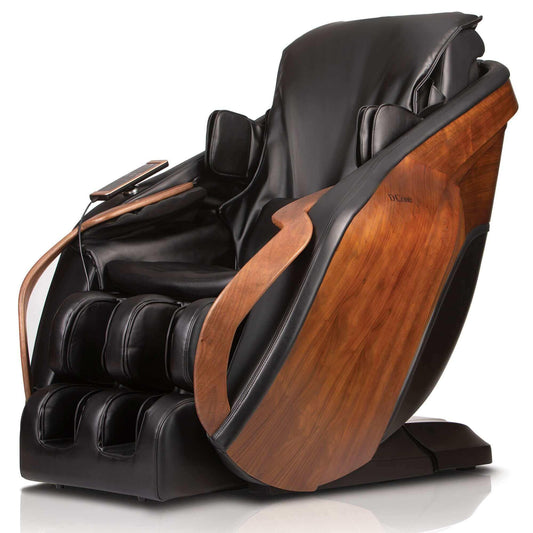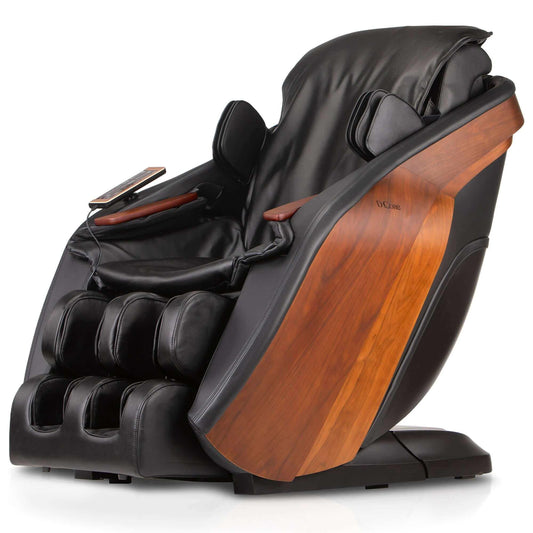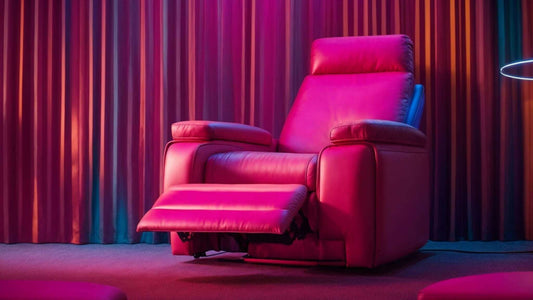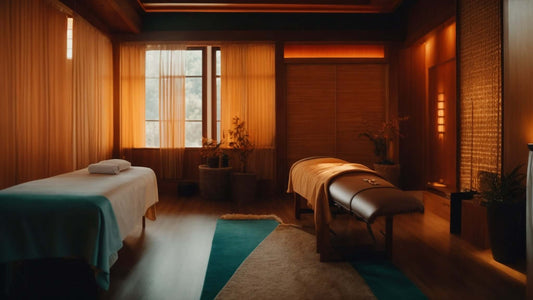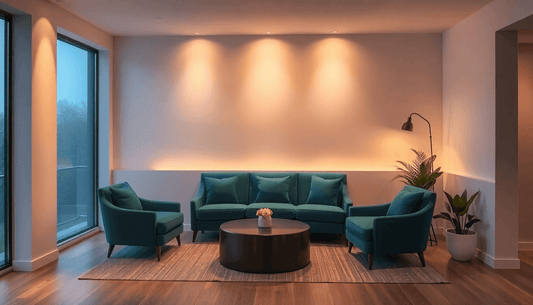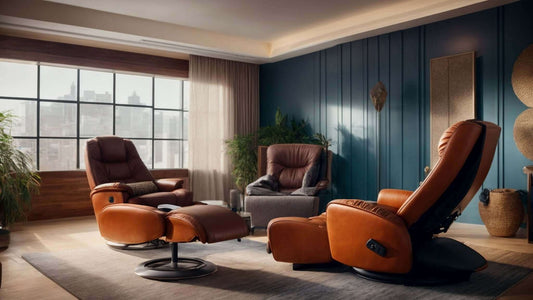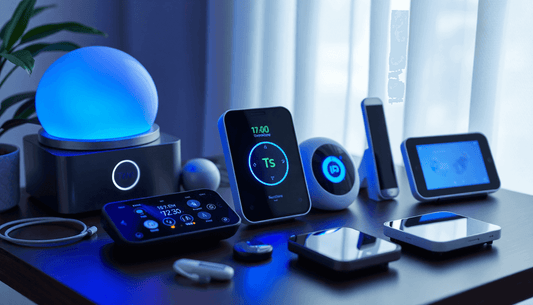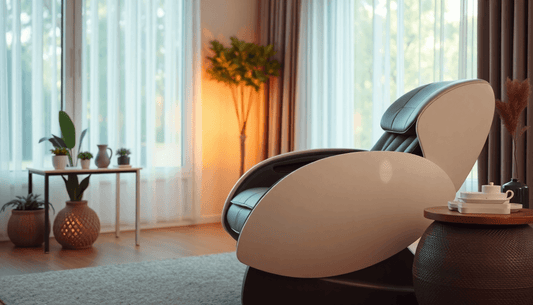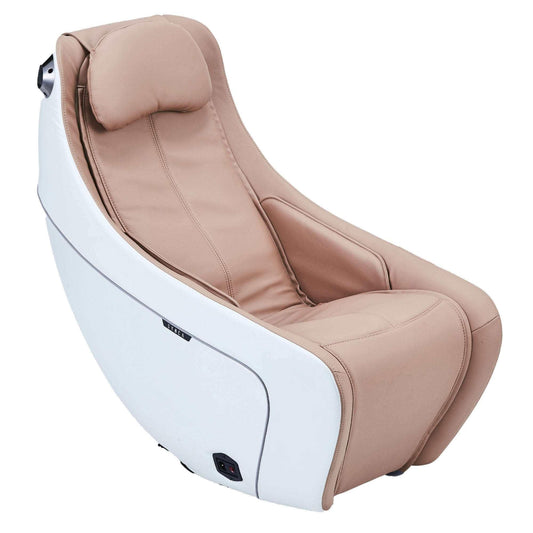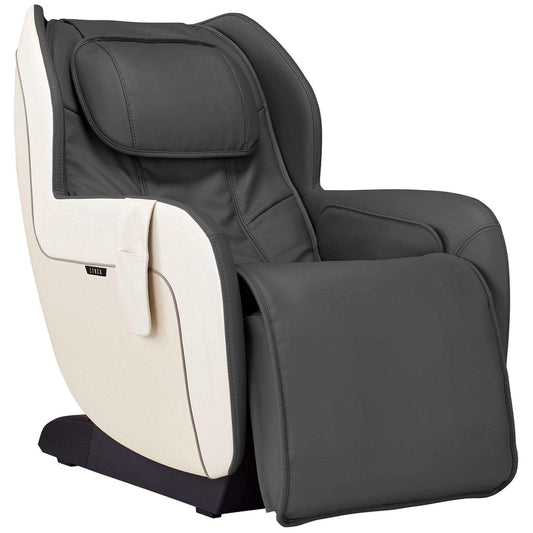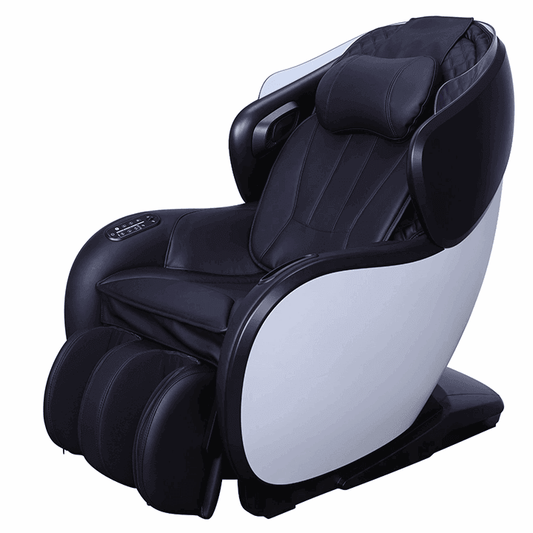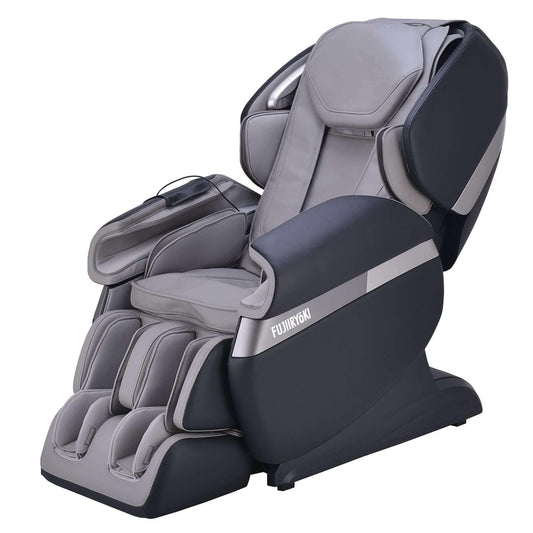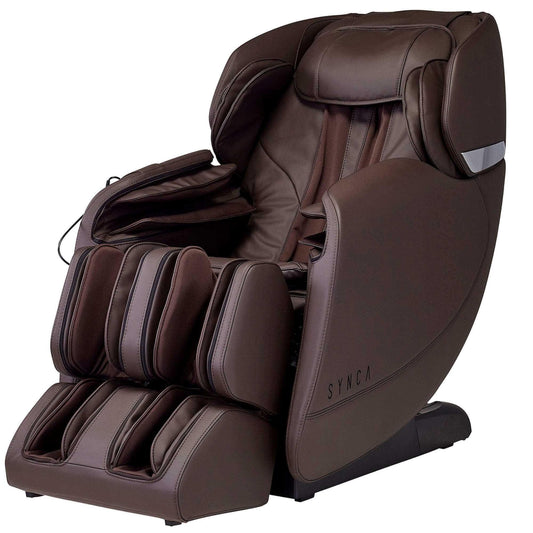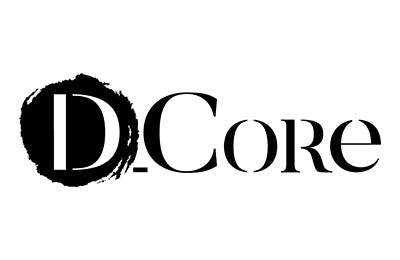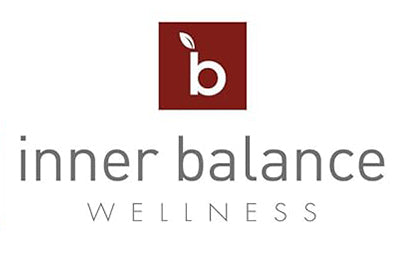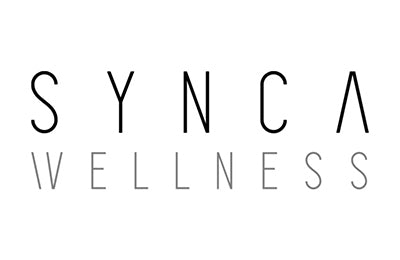
Enhance Your Circulation: How a Massage Chair Can Improve Blood Flow
Here's an overview:
- Introduction to Blood Circulation and Its Importance
- The Basics of How Blood Circulation Works
- Common Causes of Poor Circulation
- Health Risks Associated with Poor Circulation
- The Role of Massage Therapy in Enhancing Blood Flow
- How Massage Chairs Mimic Professional Massage Techniques
- Key Features of Massage Chairs That Aid Blood Circulation
- Scientific Studies Supporting the Use of Massage Chairs for Circulation
- Personal Stories and Testimonials
- Tips for Choosing the Right Massage Chair
- How Often to Use a Massage Chair for Optimal Results
- Additional Lifestyle Changes to Improve Blood Flow
- Conclusion: The Long-Term Benefits of Enhanced Circulation
Introduction to Blood Circulation and Its Importance
Blood circulation is a vital bodily function that ensures the delivery of oxygen, nutrients, and hormones to cells while aiding in the removal of waste products. It involves the heart, blood vessels, and roughly five liters of blood that circulate throughout the body. When our circulatory system is functioning optimally, every cell in our body receives the necessary components to perform effectively.
The heart acts as the central pump, propelling blood through a vast network of arteries, veins, and capillaries. Arteries carry oxygen-rich blood away from the heart to tissues, while veins return oxygen-depleted blood back to the heart. Capillaries, the smallest blood vessels, act as intermediaries where nutrient exchange happens between blood and tissues.
Key Roles of Healthy Blood Circulation:
- Ensuring oxygen and nutrient supply to tissues
- Supporting immune function by transporting white blood cells
- Aiding in waste removal and detoxification
- Maintaining body temperature regulation
- Transporting hormones and other signaling molecules
Indicators of Poor Blood Circulation:
- Cold extremities (hands and feet)
- Numbness or tingling sensations
- Swelling in lower limbs
- Muscle cramps and pain
- Fatigue and decreased stamina
- Slow healing of wounds
Healthy circulation is essential for overall well-being. Compromised blood flow can lead to serious health issues like cardiovascular diseases, varicose veins, and even more severe conditions like peripheral artery disease or deep vein thrombosis. Our daily lifestyle choices—such as diet, exercise, and stress management—significantly impact our circulatory health.
Common Factors Affecting Circulation:
- Sedentary Lifestyle: Long hours of sitting inhibit blood flow.
- Poor Diet: High cholesterol and fatty foods can clog arteries.
- Dehydration: Insufficient water intake thickens the blood.
- Smoking: Damages blood vessels and restricts circulation.
- Stress: Causes blood vessels to constrict.
Understanding the importance of blood circulation helps us make informed choices aimed at boosting our circulatory health. Engaging in physical activities, maintaining a balanced diet, and managing stress are crucial steps.
The Basics of How Blood Circulation Works
Understanding how blood circulation works is crucial to appreciating how a massage chair can improve it. Blood circulation involves the continuous movement of blood through the cardiovascular system, delivering oxygen and nutrients to various tissues and organs while removing waste products. Here's a breakdown of this essential process:
-
The Heart's Role
- Pumping Mechanism: The heart is the central organ in the circulatory system. It acts as a pump, ensuring blood flows throughout the body.
- Chambers: The heart has four chambers – two atria and two ventricles. Blood enters the atria and is then pumped into the ventricles, which push it out to the body or lungs.
-
Types of Circulation
- Systemic Circulation: This type of circulation moves oxygen-rich blood from the left side of the heart to the rest of the body. It delivers vital oxygen and nutrients to tissues and organs.
- Pulmonary Circulation: This involves moving oxygen-depleted blood from the right side of the heart to the lungs. Here, blood is oxygenated before returning to the left side of the heart to begin systemic circulation again.
-
Blood Vessels
- Arteries: These vessels carry oxygen-rich blood away from the heart. They are thick-walled and elastic, withstanding the high pressure of blood being pumped by the heart.
- Veins: Veins return oxygen-depleted blood back to the heart. They have valves that prevent backflow and are less elastic compared to arteries.
- Capillaries: These are tiny vessels that connect arteries to veins. They allow for the exchange of oxygen, nutrients, and waste products between blood and tissues.
-
Blood Flow Regulation
- Autonomic Nervous System: The autonomic nervous system regulates involuntary actions, including blood flow. It adjusts the diameter of blood vessels to either increase or decrease blood flow.
- Hormonal Influence: Hormones like adrenaline can increase heart rate and blood flow during stress or exercise.
Understanding these basics helps us recognize the importance of maintaining healthy circulation and how aids like massage chairs can play a role in enhancing blood flow.
Common Causes of Poor Circulation
Understanding the causes of poor circulation helps us pinpoint areas where we can make improvements. Several factors contribute to reduced blood flow:
- Sedentary Lifestyle: When we sit for extended periods, it hampers blood flow. Lack of movement reduces the efficiency of our circulatory system.
- Smoking: Smoking damages blood vessels and limits their ability to function correctly. Nicotine and other chemicals in cigarettes restrict blood flow.
- Poor Diet: A diet high in saturated fats, sugar, and cholesterol leads to plaque buildup in the arteries, known as atherosclerosis, hindering blood flow.
- Obesity: Excessive body weight puts extra pressure on blood vessels, making it harder for blood to circulate efficiently.
- Diabetes: Elevated blood sugar levels damage blood vessels over time, leading to poor circulation. Peripheral arterial disease often accompanies diabetes.
- High Blood Pressure: Chronic hypertension causes the walls of arteries to thicken, which narrows the passageway for blood flow.
- Peripheral Artery Disease (PAD): This condition narrows arteries outside the heart, especially in the legs, reducing the blood supply to these areas.
- Varicose Veins: Enlarged veins hinder blood from flowing back to the heart effectively, causing pooling and swelling in the legs.
- Age: As we age, blood vessels lose elasticity and efficiency, making it harder for the blood to circulate.
- Medical Conditions: Conditions such as heart disease, anemia, or Raynaud's disease also contribute to poor circulation.
These factors often intertwine, creating complex challenges for the circulatory system. By addressing these causes, we can significantly improve blood flow and overall health. Identifying and managing these factors can prevent more severe health issues linked to poor circulation.
Health Risks Associated with Poor Circulation
When our circulation is compromised, various health issues can arise. Poor blood flow can affect not just one area but several systems in our body. Let’s explore the health risks linked to inadequate circulation:
-
Numbness and Tingling: We might experience a frequent sensation of numbness or tingling in our hands and feet. This is often due to insufficient blood reaching these extremities, causing nerve issues and resulting discomfort.
-
Cold Extremities: Cold hands and feet can be more than just a minor inconvenience. Poor circulation reduces blood flow, leading to lower temperatures in these areas, often making us feel perpetually chilly even in warm conditions.
-
Swelling: Edema, or swelling, particularly in the legs, ankles, and feet, can occur when blood flow is restricted. This causes fluid to accumulate, creating pressure and discomfort.
-
Fatigue: When our muscles and organs don't receive ample blood supply, they are deprived of essential oxygen and nutrients. This can make us feel constantly tired, even if we've had adequate rest.
-
Varicose Veins: Poor circulation can lead to the development of varicose veins. These swollen, twisted veins can be painful and often appear blue or dark purple, mainly in the legs.
-
Ulcers: Inadequate blood flow can slow down the healing process of cuts and sores, turning minor injuries into chronic ulcers. This is particularly concerning for individuals with diabetes or peripheral artery disease.
-
Blood Clots: One of the most severe risks is the formation of blood clots. Restricted blood flow can lead to clotting, which can travel to crucial organs like the lungs, heart, or brain, causing life-threatening events such as a pulmonary embolism, heart attack, or stroke.
-
Cognitive Decline: Our brain relies heavily on a steady supply of oxygen-rich blood. Poor circulation can impair this supply, leading to cognitive issues such as memory loss, confusion, and difficulties in concentration.
-
Heart Issues: Poor circulation puts an extra strain on our heart as it works harder to pump blood throughout our body. This can lead to hypertension, heart disease, and other cardiovascular problems.
Maintaining healthy blood flow is crucial for our overall well-being. Recognizing the risks associated with poor circulation can help us take proactive steps to enhance our circulatory health.
The Role of Massage Therapy in Enhancing Blood Flow
When we think about improving our circulation, massage therapy often comes to mind. Massage therapy plays a crucial role in enhancing blood flow throughout our bodies. By targeting specific muscle groups and applying pressure through various techniques, massage can stimulate blood vessels and promote more efficient circulation.
Techniques That Promote Blood Flow
- Petrissage: This technique involves kneading and squeezing the muscles, which helps to work out knots and increases blood flow to those areas.
- Effleurage: Long, sweeping strokes are used to encourage blood flow toward the heart, aiding in the removal of waste products and the delivery of oxygen and nutrients.
- Tapotement: Rhythmic tapping with cupped hands or fingers can invigorate the circulation and stimulate blood vessels.
- Friction: Created by rubbing the skin briskly, this technique helps to break down adhesions and increases circulation in the affected area.
Benefits of Improved Blood Flow
- Nutrient Delivery: Enhanced blood flow ensures that oxygen and vital nutrients reach various tissues and organs more efficiently, contributing to overall health.
- Waste Removal: Improved circulation helps in faster removal of metabolic waste products, which can reduce fatigue and enhance energy levels.
- Reduced Muscle Tension: Increased blood flow warms up the muscles, making them more pliable and reducing the risk of injury.
- Improved Healing: Enhanced circulation promotes the healing of soft tissue injuries by delivering essential proteins and nutrients needed for tissue repair.
Conditions Benefitting from Massage-Induced Blood Flow
- Chronic Pain: Conditions such as lower back pain or arthritis can see a reduction in discomfort due to the increased nutrient and oxygen supply to tissues.
- Post-Operative Recovery: Enhanced blood flow can accelerate the healing process after surgeries by reducing swelling and increasing tissue repair rates.
- Cardiovascular Health: Regular massage can help to maintain optimal cardiovascular function by promoting healthy blood flow and reducing blood pressure.
How Massage Chairs Facilitate Blood Flow
Massage chairs replicate the techniques of professional massage therapists, applying precise pressure and movement to various parts of the body. Features such as:
- Heated Elements: Promote vasodilation, which increases blood flow.
- Air Compression: Sequential compression can mimic manual massage techniques to improve blood circulation.
- Zero Gravity Positioning: Elevates the legs, aiding venous return and reducing strain on the heart.
Incorporating these features, we can use massage chairs as effective tools to enhance blood flow, promoting better overall health and well-being.
How Massage Chairs Mimic Professional Massage Techniques
We often wonder how a massage chair can replicate a professional masseuse's touch. Advanced technology and thoughtful engineering make it possible. Modern massage chairs incorporate a variety of mechanisms and functionalities that simulate human hands and techniques, offering a holistic massage experience.
Techniques Simulated
Modern massage chairs use several techniques that align closely with those employed by professional therapists.
-
Kneading: This technique involves circular movements that stretch and lift the muscles. Massage chairs achieve this through rollers and airbags, applying consistent pressure to help relieve tension and improve blood flow.
-
Tapping: Tapping or percussion movements mimic the rhythmic tapping of a professional's fingers or hands. This action stimulates circulation in targeted areas by encouraging arterial and venous blood flow.
-
Rolling: Rollers move up and down the back, simulating the movement of a therapist’s hands. The rolling motion can alleviate stiffness and enhance spinal alignment, promoting better overall circulation.
-
Shiatsu: Originating from Japan, Shiatsu involves applying pressure to specific points on the body. Massage chairs often utilize airbags and mechanical nodes to apply targeted pressure, mirroring the precision and effectiveness of a Shiatsu therapist.
-
Compression: Airbags exert pressure on muscles, similar to how a therapist might squeeze or press various muscle groups. Compression techniques facilitate lymphatic drainage and improved circulation, particularly in the extremities.
Components at Work
Different components integrate seamlessly to replicate these techniques.
- Airbags: Strategically placed airbags inflate and deflate to mimic compression and stretching techniques.
- Rollers: Often 2D, 3D, or even 4D, these mechanisms move in multiple directions, simulating various hand movements.
- Heating Elements: Integrated heating pads provide warmth, loosening muscles and further enhancing blood flow.
- Zero Gravity Settings: This mechanism elevates the legs above the heart level, optimizing blood circulation by reducing pressure on the spine and enhancing relaxation.
Advanced Features
Innovative features extend the realism and effectiveness of massage chairs.
- Body Scanning Technology: Scanners map your body’s contours to tailor the massage to your specific needs.
- Adjustable Intensity Settings: These allow us to customize the pressure, ensuring a comfortable and effective experience.
- Programmable Sessions: Pre-set routines focus on different techniques and areas, offering a variety of massage experiences.
Massage chairs, with their advanced technologies and multiple functionalities, offer an experience that closely mimics professional techniques. They provide numerous health benefits, including improved circulation, which contributes to our overall well-being.
Key Features of Massage Chairs That Aid Blood Circulation
When considering massage chairs that aim to improve blood circulation, several key features stand out. These features, designed with advanced technology, provide numerous benefits that help enhance our overall well-being.
1. Zero Gravity Positioning
Massage chairs with zero gravity positioning elevate our feet to the same height as our heart. This position reduces pressure on the spine and promotes better blood flow throughout the body. By simulating a weightless environment, it helps improve circulation and reduce strain on our cardiovascular system.
2. Air Compression Massage
Air compression massage involves airbags that inflate and deflate around specific body parts such as the arms, legs, and feet. This rhythmic compression mimics the natural muscle contractions we experience during movements, which helps stimulate blood flow. It effectively aids in reducing swelling and improving overall circulation.
3. Heat Therapy
Some massage chairs come with built-in heating elements, targeting areas like the lower back and legs. Heat therapy helps dilate blood vessels, promoting better blood flow by allowing more oxygen and nutrients to reach muscles and tissues. This enhances relaxation and aids in quicker recovery of sore muscles.
4. Foot and Calf Massage
Dedicated foot and calf massage mechanisms apply pressure to our feet and legs, which are crucial areas for maintaining good circulation. Techniques such as kneading, rolling, and squeezing help move blood back up towards the heart, reducing fatigue and enhancing overall blood flow.
5. Full-Body Stretch Programs
Full-body stretch programs are designed to elongate our muscles and spine in a gentle yet effective way. These stretching routines promote flexibility and relieve tension. By encouraging muscles to relax and lengthen, blood flow is naturally improved, contributing to better overall circulation.
6. Varying Intensity Settings
Adjustable intensity settings allow us to customize the massage experience based on our comfort level and circulation needs. Higher intensity settings can provide deeper muscle stimulation, which helps increase blood flow, while lower settings offer a more gentle massage.
7. Rolling and Kneading Techniques
Rolling and kneading techniques simulate the hands of a masseuse, moving along our spine and muscles to prompt improved blood circulation. These movements not only relax muscles but also enhance the flow of oxygen-rich blood to various body parts, promoting healing and reducing fatigue.
8. User-Friendly Controls and Programs
Modern massage chairs often come with user-friendly controls and pre-programmed settings tailored to improve blood circulation. These programs automate the massage experience to ensure that we receive optimal benefits without needing to manually adjust the chair's features.
Each of these features is designed to target specific areas and promote blood circulation, ensuring we receive comprehensive health benefits through regular use of a massage chair.
Scientific Studies Supporting the Use of Massage Chairs for Circulation
Recent studies have profoundly demonstrated the positive impact that massage chairs can have on circulation. We explore some of these pivotal findings.
Enhancing Blood Flow
Several studies have evaluated the specific changes in blood flow pre-and post-massage chair sessions.
-
Increased Peripheral Circulation:
- Research conducted by the American Heart Association shows an average 21% increase in peripheral blood flow after using a massage chair for 15 minutes.
- Another study published in the Journal of Physical Therapy Science found that subjects who used a massage chair experienced significant improvements in their leg blood flow.
Reducing Blood Pressure
Hypertension is a major issue for circulatory health. We have identified studies that specifically measure the effect of massage chairs on blood pressure:
- Hypertension Research: The Journal of Human Hypertension documented a study where participants had a marked reduction in their systolic and diastolic blood pressure after using a massage chair for a 4-week period.
- Relaxation Response: A study featured in Biological Psychology highlighted how relaxation induced by massage chairs can help reduce stress-related hypertension.
Improvements in Venous Blood Flow
The efficacy of massage chairs to enhance venous blood flow has been another focal point of research:
- Lymphatic Circulation: An exploratory study in the Lymphatic Research and Biology journal noted enhanced lymphatic fluid movement coupled with venous return, which are both critical for circulatory health.
- Deep Vein Thrombosis (DVT) Prevention: An article in The Lancet reported positive outcomes for patients at risk of DVT. Use of massage chairs resulted in significant improvements in venous blood flow, reducing clot formation.
Muscle Activity and Circulation
We’ve noticed that the synergy between muscle activity and circulation cannot be underestimated. Several studies back this:
- Electromyographic Studies: Research in the Journal of Electromyography and Kinesiology concluded that using a massage chair can significantly increase electrical activity in the muscles, which naturally boosts blood flow.
- Muscle Oxygenation: Published findings in the European Journal of Applied Physiology showed massage chairs enhancing muscle oxygenation, further proving their efficacy in improving blood circulation.
We must consider the broad range of scientific studies supporting the circulatory benefits of massage chairs.
Personal Stories and Testimonials
We've heard from many individuals who have personally experienced the benefits of using a massage chair to enhance their circulation. Their unique stories and testimonials provide valuable insights into how these chairs have made a difference in their lives.
-
John's Journey to Recovery
John, a 45-year-old software engineer, described how a massage chair helped him recover from a sports injury. He noted:
"After my knee surgery, I struggled with poor circulation and constant leg pain. My doctor recommended trying a massage chair to improve blood flow in my legs. Within a few weeks, I noticed a significant reduction in pain and inflammation."
-
Sarah's Stress Relief
Sarah, who works in a high-stress managerial role, shared how the massage chair helped her:
"Long hours at work left me with chronic back pain and poor circulation. Using a massage chair for just 20 minutes each evening has transformed my well-being. I feel more relaxed and the numbness in my legs has disappeared."
-
Michael's New Lease on Health
Michael, a retiree in his late 60s, talked about how a massage chair improved his circulation:
"Age and inactivity had taken a toll on my circulation. My feet were always cold, and I felt sluggish. After using a massage chair daily, my feet are warmer, and I have regained some energy I thought was lost forever."
Additional Benefits Highlighted by Users:
-
Enhanced Recovery Post-Exercise:
- Many users like Emily, an amateur athlete, have shared how their muscles recover faster post-exercise.
"Using the massage chair after my runs has become a ritual. It helps reduce muscle soreness and improves my overall blood flow."
-
Better Sleep Quality:
- Reports from users like David emphasize improvements in sleep patterns.
"Ever since incorporating the massage chair into my bedtime routine, I have experienced deeper and more restful sleep."
-
Improved Overall Mobility:
- For people like Linda, who deal with stiffness, massage chairs contribute to better overall mobility.
"Daily sessions in my massage chair have made a big difference in my flexibility and ease of movement."
These stories reinforce the impact a massage chair can have on well-being, highlighting its potential to significantly improve circulation and quality of life.
Tips for Choosing the Right Massage Chair
When selecting a massage chair, we must consider several vital factors to get the best fit for our needs. Here's a comprehensive guide to help us make an informed decision:
1. Identify Our Needs
Firstly, we should determine what we hope to achieve with a massage chair. Whether it’s for stress relief, muscle recovery, or enhancing circulation, understanding our specific needs will guide us toward the right model.
2. Massage Techniques
Different chairs offer various massage techniques such as:
- Shiatsu: Utilizes kneading and pressing movements.
- Swedish: Focuses on long strokes and muscle relaxation.
- Deep Tissue: Targets deeper layers of muscles.
- Reflexology: Concentrates on pressure points in the feet.
Knowing which techniques benefit us most is crucial.
3. Features and Functions
We must look for essential features:
- Heat Therapy: Provides additional relaxation and improves blood flow.
- Zero Gravity Positioning: Reduces stress on the spine and enhances circulation.
- Adjustability: Options for adjusting strength, speed, and intensity.
- Body Scanning: Ensures the massage adapts to our body contours.
4. Size and Space
It's important to measure the space where the chair will be placed. We don’t want our new massage chair to overpower the room or not fit correctly. Foldable models can save space when not in use.
5. Budget
Establishing a budget helps narrow down options. High-end chairs offer more features, but there are affordable models that provide excellent benefits. Let’s aim for the best value within our price range.
6. Warranty and Support
A good warranty ensures that we are covered in case of malfunctions. We should check for:
- Duration of Coverage: Longer warranties usually indicate better quality.
- Customer Support: Access to reliable customer service for troubleshooting and repairs.
7. Reviews and Recommendations
Researching customer reviews and expert recommendations gives us insight into the performance and reliability of different models. Fellow users’ experiences can provide valuable information on what we can expect.
By considering these factors, we can make an informed choice and enjoy the full benefits of our massage chair.
How Often to Use a Massage Chair for Optimal Results
To see significant improvement in blood circulation and overall well-being, the frequency of using a massage chair matters. We should consider several factors:
-
Health Conditions:
- If we have chronic conditions like arthritis or circulatory issues, more frequent sessions might be needed.
- Consulting with a healthcare provider can help determine the optimal frequency.
-
Intensity Settings:
- Low to medium intensity can be used daily without adverse effects.
- High intensity should be limited to 3-4 times a week to prevent muscle fatigue or soreness.
-
Duration of Sessions:
- Sessions lasting 15 to 20 minutes can be done daily.
- Longer sessions of 30 minutes or more should be spaced out to avoid overuse.
-
Initial Adjustment Period:
- When starting, we might want to begin with shorter sessions (10-15 minutes), gradually increasing the duration as our body gets accustomed.
- After this period, we can adjust the frequency based on comfort and needs.
-
Listening to Our Body:
- If we feel any discomfort or pain, reducing frequency and intensity is essential.
- Alternating days could help mitigate any issues.
-
Purpose of Use:
- For general relaxation, daily use at lower settings can be beneficial.
- For addressing specific issues like muscle recovery or pain, targeted and possibly more frequent use may be required.
Choosing how often to use a massage chair should consider all these variables. By adapting our usage to our specific needs and conditions, we can maximize the benefits without risking overuse and potential negative impacts on our health. Balancing intensity, duration, and frequency ensures optimal results and enhances our overall circulation effectively.
Additional Lifestyle Changes to Improve Blood Flow
In addition to using a massage chair, we can adopt various lifestyle changes to boost our blood circulation. By integrating these habits, we may notice significant health improvements.
Regular Exercise
Engaging in physical activities, such as walking, jogging, cycling, or swimming, helps maintain healthy blood flow. Exercise strengthens the heart, enabling it to pump blood more efficiently throughout the body. Aim for at least 30 minutes of moderate exercise most days of the week.
Healthy Diet
We need to focus on eating a balanced diet rich in fruits, vegetables, whole grains, lean proteins, and healthy fats. Foods that improve blood flow include:
- Citrus fruits
- Berries
- Spinach and kale
- Nuts and seeds
- Oily fish like salmon
- Dark chocolate
Hydration
Staying well-hydrated is essential for maintaining optimal blood flow. Water helps keep the blood thin, making it easier for it to circulate. We should aim to drink at least eight 8-ounce glasses of water daily.
Stress Management
Chronic stress can negatively affect our blood circulation. Incorporating stress-relieving activities such as meditation, yoga, deep breathing exercises, and spending time in nature can help us manage stress.
Quit Smoking
Smoking damages blood vessels and restricts blood flow. By quitting smoking, we can significantly improve our circulation and overall cardiovascular health.
Maintain a Healthy Weight
Excess weight can impede blood flow and put additional strain on the heart. Adopting a healthy diet and regular exercise routine can help us maintain an ideal weight, improving our circulation.
Proper Posture
Sitting or standing in one position for prolonged periods can hinder blood flow. We should aim to maintain good posture and take breaks to stretch and move around during long periods of inactivity.
"Good circulation is crucial for overall health. By combining the use of a massage chair with these lifestyle changes, we can take significant steps toward enhancing our blood flow and well-being."
Avoid Tight Clothing
Wearing tight clothing can restrict blood flow, especially in the legs and lower body. Choosing comfortable clothing that allows for proper circulation can make a noticeable difference.
By implementing these lifestyle changes, we can further enhance our blood flow and support overall health.
Conclusion: The Long-Term Benefits of Enhanced Circulation
When we think about health improvements, we often focus on exercise, diet, and medication. However, enhanced circulation provided by regular use of a massage chair offers long-term benefits that might surprise us. Proper blood flow contributes to overall well-being in several impactful ways.
Firstly, enhanced circulation helps deliver oxygen and nutrients to our tissues more efficiently. This leads to improved muscle function and reduced fatigue. When muscles receive ample blood flow, they perform better and recover quicker, making it easier for us to maintain an active lifestyle.
Secondly, a massage chair's ability to stimulate circulation aids in removing metabolic waste from our body. Improved blood flow supports the lymphatic system, which is essential for flushing out toxins. This detoxification process lowers our susceptibility to illnesses and infections.
Moreover, better circulation can benefit our skin health. Blood flow is crucial for skin repair and regeneration. By using a massage chair regularly, we help keep our skin looking youthful and vibrant, reducing the appearance of wrinkles and blemishes.
We may also notice an improvement in our mental health. Enhanced blood flow to the brain can lead to better cognitive functions, including memory and focus. This mental clarity can boost our productivity and mood, positively impacting our daily lives.
Let’s also consider how enhanced blood flow can benefit individuals with chronic conditions:
- Diabetes: Improved circulation can prevent complications like foot ulcers and neuropathy.
- Hypertension: Massage can help in lowering blood pressure by improving the efficiency of blood flow.
- Arthritis: Better blood flow to the joints can reduce pain and inflammation.
In addition, enhanced circulation contributes to heart health. Our heart works more efficiently when blood vessels are free from obstructions, reducing the risk of heart diseases. Regular use of a massage chair can thus be seen as a proactive measure against cardiovascular issues.
Finally, enhanced circulation aids in managing stress. When we are stressed, our blood vessels constrict, limiting blood flow. A massage chair helps alleviate stress, promoting a more relaxed state and restoring healthy circulation. Enhanced circulation isn't just a short-term benefit; it's a long-term investment in our overall health.

